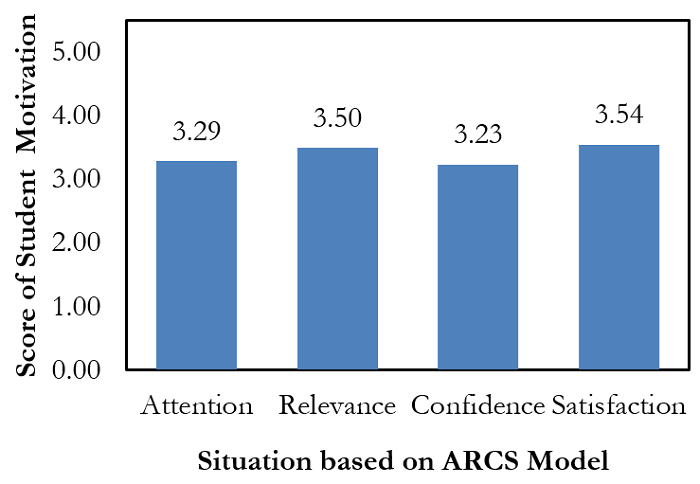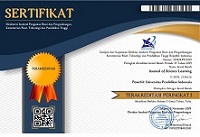
Edmodo as Web-Based Learning to Improve Student’s Cognitive and Motivation in Learning Thermal Physics
Abstract
This research aims to investigate the use of Edmodo as web-based learning in learning thermal physics in junior high school. The analysis of this research focused on students’ cognitive and motivation in the classroom. The method used in this research was quasi-experiment with the pretest-posttest design. One class taken as a sample in this research comes from one of an international school in Padalarang. The quantitative data of this research was gained through the objective test (pretest-posttest) based on Bloom's Taxonomy and questioner of motivation based on ARCS Motivational Design. Data processing was done by SPSS 20.0. The result of this research shows that there is an improvement of student cognitive C2 until C5 after learning using Edmodo. The average score in pretest was 45.89 and improve to 72.63. The result of normalized gain was 0.49, it included as a medium improvement. Edmodo also increases student motivation in learning thermal physics.
Full Text:
Download PDFReferences
Anderson, L. W., Krathwohl, D. R., Airasian, P. W., Cruikshank, K. A., Mayer, R. E., Pintrich, P. R., ... & Wittrock, M. C. (2001). A taxonomy for learning, teaching, and assessing: A revision of Bloom’s taxonomy of educational objectives, abridged edition. White Plains, NY: Longman.
Blazer, C. (2010). Twenty Strategies to Increase Student Motivation. Information Capsule. Research Services, Miami-Dade County Public Schools. 0907.
Chao, J. T., Parker, K. R., & Fontana, A. (2011). Developing an interactive social media based learning environment. Issues in Informing Science and Information Technology, 8, 323-334.
Fraenkel, J.R., & Wallen, N.E. (2007). How To Design and Evaluate Research in Education, Sixth Edition. New York: Mc Graw Hill.
Hake, R. R. (1999). Analyzing change/gain scores. Unpublished.[online] URL: http://www. physics. indiana. edu/~ sdi/AnalyzingChange-Gain. pdf.
Heafner, T. (2004). Using technology to motivate students to learn social studies. Contemporary Issues in Technology and Teacher Education, 4(1), 42-53.
Keller, J. M. (2000). How to integrate learner motivation planning into lesson planning: The ARCS model approach. VII Seminario, Santiago, Cuba, 1-13.
Nee, C. (2014). The effect of educational networking on students’ performance in biology. In TCC Worldwide Online Conference (pp. 73-97). TCCHawaii.
Pergola, T. M., & Walters, L. M. (2011). Evaluating Web-Based Learning Systems. Journal of Instructional Pedagogies, 5.
Prima, E. C., Putri, A. R., & Rustaman, N. (2018). Learning solar system using PhET simulation to improve students’ understanding and motivation. Journal of Science Learning, 1(2), 60-70.
Poulsen, A., Lam, K., Cisneros, S., & Trust, T. (2008). ARCS model of motivational design. Retrieved March, 21, 2011.
Putri, A. U., Rusyati, L., & Rochintaniawati, D. (2018). The Impact of Problem-Solving Model on Students’ Concept Mastery and Motivation in Learning Heat Based on Gender. Journal of Science Learning, 1(2), 71-76.
Wang, S. K., & Reeves, T. C. (2007). The effects of a web-based learning environment on student motivation in a high school earth science course. Educational Technology Research and Development, 55(2), 169-192.
Ziden, A. A., & Rahman, M. F. A. (2013). The Effectiveness of Web-Based Multimedia Applications Simulation in Teaching and Learning. International Journal of Instruction, 6(2), 211-222.
DOI: https://doi.org/10.17509/jsl.v1i3.11796
Refbacks
- There are currently no refbacks.
Copyright (c) 2018 Journal of Science Learning


Jl. Dr. Setiabudhi 229 Bandung 40154, West Java, Indonesia











